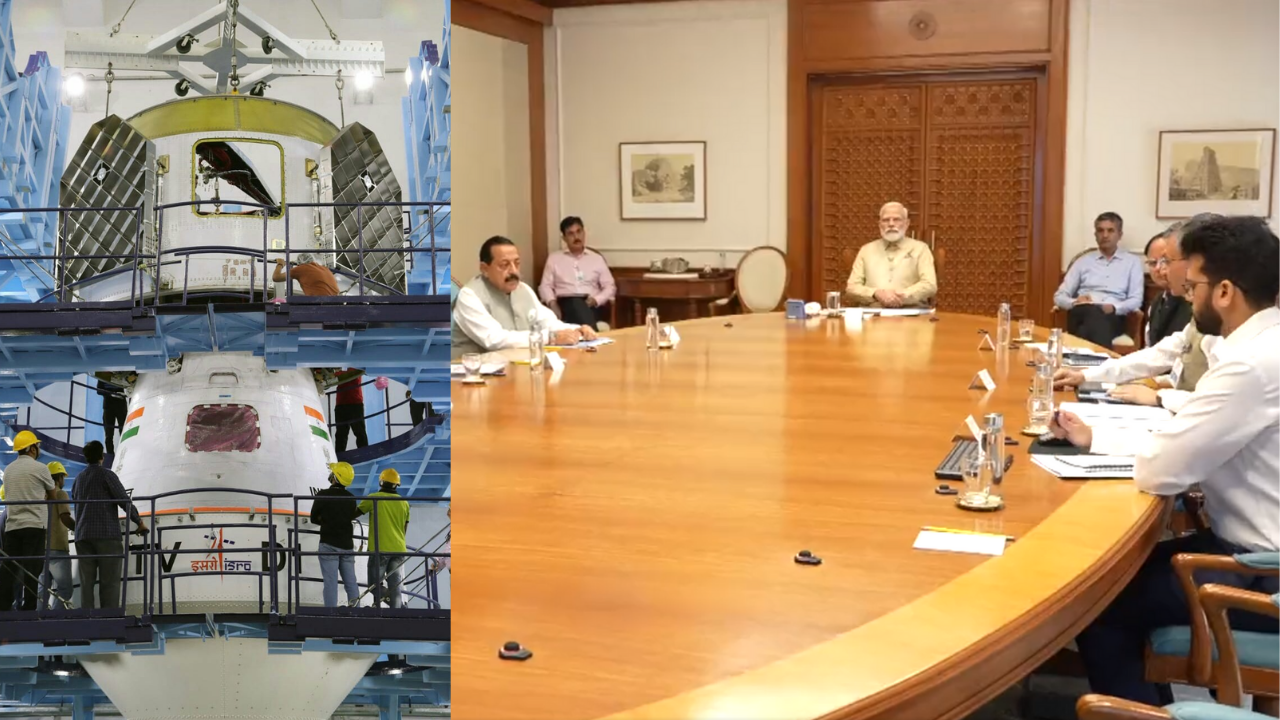Prime Minister Narendra Modi has presided over a high-level meeting to evaluate the progress of India’s Gaganyaan mission and to chart the future course of India’s space exploration programs.
According to a release from the Prime Minister’s Office, the Department of Space provided a comprehensive overview of the Gaganyaan mission, highlighting various technologies that have been developed, such as human-rated launch vehicles and system qualification.
The Prime Minister’s Office statement noted that approximately 20 major tests, including three uncrewed missions of the Human Rated Launch Vehicle (HLVM3), are in the pipeline. The first demonstration flight of the Crew Escape System Test Vehicle is scheduled for October 21.
Regarding the Flight Test Vehicle Abort Mission, an integral part of the Gaganyaan human space mission, ISRO is geared up for the mission between 7 am and 9 am this Saturday. This test is designed to simulate the abort condition during the ascent trajectory.
Gaganyaan mission involves the separation of crew escape systems with crude modules from the test vehicle at an altitude of about 17 km, followed by an autonomous execution of the abort sequence, including the deployment of a series of parachutes and the safe touchdown of the crew module in the sea, approximately 10 km from the coast of Sriharikota.
During the review meeting, Prime Minister Modi underlined the preparedness of the mission, reaffirming the target of launching it in 2025. Building on recent successes such as the Chandrayan-3 and Aditya L1 Missions, he directed the country to aim for ambitious goals, including the establishment of the ‘Bharatiya Antariksha Station’ (Indian Space Station) by 2035 and sending the first Indian to the Moon by 2040.
A roadmap for Moon exploration will be developed by the Department of Space, encompassing a series of Chandrayaan missions, the development of a Next Generation Launch Vehicle (NGLV), the construction of a new launch pad, and the establishment of human-centric laboratories and associated technologies.
The Prime Minister’s Office stressed, “This will encompass a series of Chandrayaan missions, the development of a Next Generation Launch Vehicle (NGLV), construction of a new launch pad, setting up human-centric Laboratories and associated technologies.”
Prime Minister Modi also urged Indian scientists to focus on interplanetary missions, including a Venus Orbiter Mission and a Mars Lander, expressing confidence in India’s capabilities and reiterating the nation’s commitment to scaling new heights in space exploration.
The Gaganyaan project aims to demonstrate India’s human spaceflight capability by launching a crew of three members to an orbit of 400 km for a 3-day mission and safely bringing them back to Earth, landing in Indian sea waters.
India’s recent accomplishments, including the successful landing of the Chandrayaan-3 lander module on the moon’s South Pole and the launch of the Aditya-L1 solar mission, have solidified the country’s position in the global space exploration landscape.
Also Read: Supreme Court Denies Marriage Equality Rights to LGBTQIA+ Community
Catch all the Latest Business News, Breaking News Events, and Latest News Updates on NewsX

















